Exploring the Animals of the Amazon Rainforest in Peru means venturing into one of the most biodiverse ecosystems in the world, home to more than 1,300 species of birds, 160 mammals, and hundreds of unique amphibians, reptiles, and insects. In its tropical landscapes, you can see jaguars, pink river dolphins, macaws, monkeys, and caimans in their natural habitat. Experiencing this is a true wonder of wildlife and a deep connection with the nature of the Peruvian Amazon.
What animals from the Amazon rainforest live in Peru?
The Peruvian Amazon is a biodiversity paradise. Imagine walking through the jungle at dawn, surrounded by towering trees, and hearing the vibrant call of macaws. Among the dense foliage, stealthy jaguars emerge, pink river dolphins swim in the rivers, and harpy eagles soar overhead. These Animals of the Amazon Rainforest, visible by day (and night), create an unforgettable experience. In Tambopata Reserve, jaguars, giant otters, capybaras, toucans, and harpy eagles have been recorded. The Manu National Park is home to more than 160 mammal species and over 1,000 species of birds. All this tropical wildlife makes Peru a unique destination to experience Amazonian fauna.
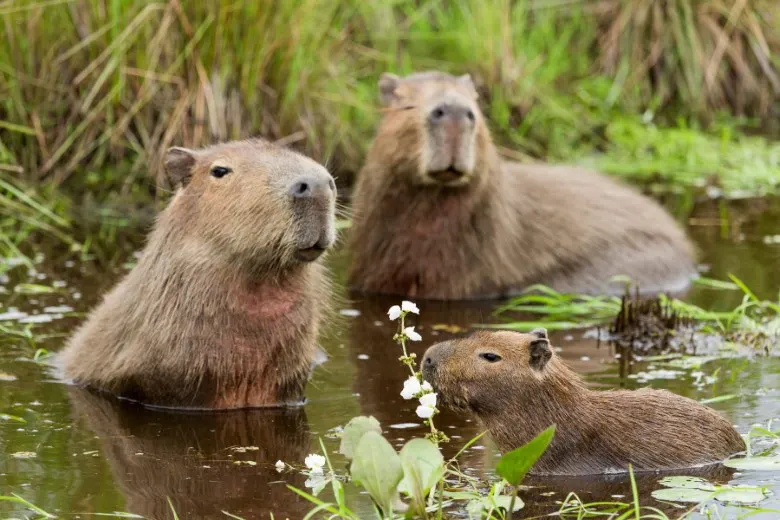
What is the best time to see animals in the Peruvian Amazon?
The dry season (April to October) is ideal for wildlife watching. With less rainfall, trails are easier to walk and many animals gather near water sources. Although it’s called the “dry” season, there are still occasional rains, but it allows you to explore the jungle on foot with fewer mosquitoes. Between June and November, river levels drop significantly, making it easier to spot giant fish leaping or even catch piranhas.
Moreover, migratory birds fly near the canopy in flocks unseen during the rainy season. During the rainy season (December to March), the jungle floods and you need a boat to get around. This time is good for seeing aquatic and amphibious animals, but muddy soils hide many land species. In summary, to enjoy the Animals of the Amazon Rainforest, plan your trip between April and October, taking advantage of the cool mornings and sunsets.
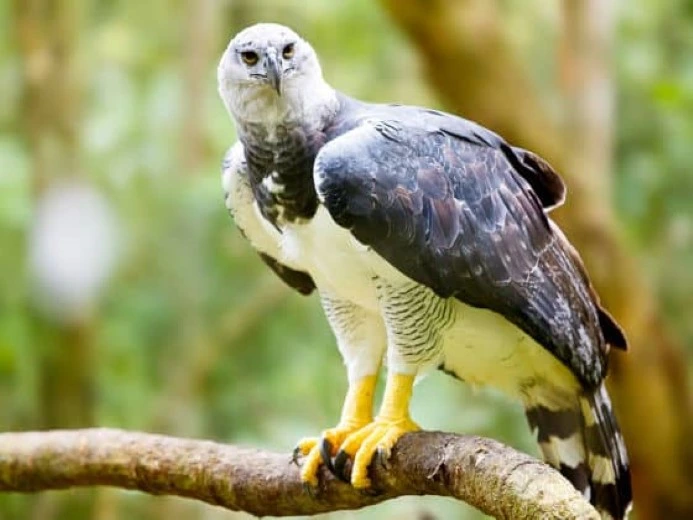
How can I see animals in the Peruvian Amazon?
The best strategy is to hire expert guides and visit protected areas. Peru Jungle Trips organizes wildlife observation tours in the Peruvian Amazon. The Manu National Park is one of the richest sites in terms of animal life, featuring jaguars, spectacled bears, and macaws. It’s essential to travel in small groups, go during peak animal activity times (sunrise, sunset, or nighttime walks) and walk very quietly. Many tours include night outings to spot nocturnal animals. Local guides know the best spots: boat rides along rivers let you see monkeys, turtles, and caimans, while evening hikes reveal exotic birds perched in the foliage.
It’s recommended to wear neutral colors, bring binoculars, and avoid getting too close. Follow signage and do not disturb animals; this way you may see sleeping sloths or tapirs crossing trails undisturbed. Book a tour with experts like Peru Jungle Trips, choose the right season, use binoculars, and be patient. This is how you’ll enjoy the Animals of the Amazon Rainforest in all their splendor.
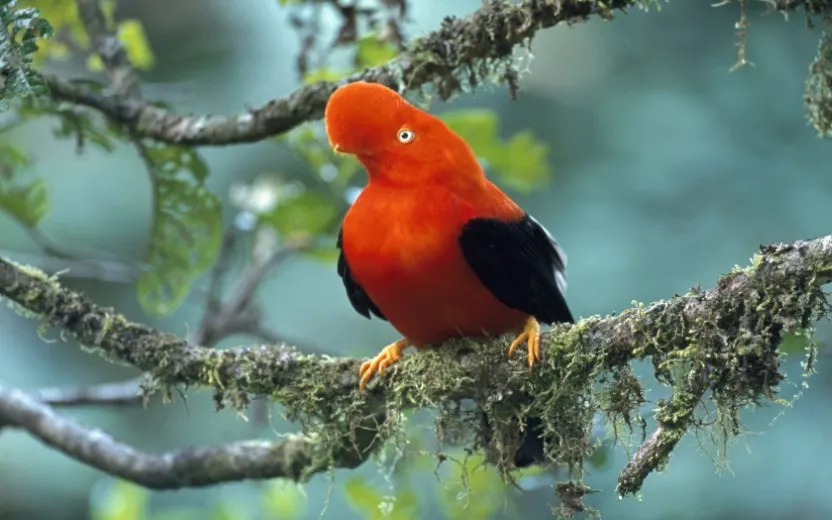
Mammals that live in the Peruvian Amazon rainforest
Some standout mammals of the Peruvian Amazon include:
- Jaguar (Panthera onca): The largest feline in the Americas. A stealthy hunter that climbs trees and swims well. Its presence is key to the ecosystem.
- Capybara (Hydrochoerus hydrochaeris): The world’s largest rodent. A sociable herbivore often seen in groups by riverbanks.
- Pink river dolphin (Inia geoffrensis): Famous for its color and intelligence. Endangered.
- Howler monkey (Alouatta seniculus): Known for its powerful howl heard from kilometers away.
- Giant river otter (Pteronura brasiliensis): South America’s largest aquatic predator mammal. Lives in families and hunts fish and crabs.
- Black-capped squirrel monkey (Saimiri vanzolinii): A small, highly social monkey that lives in large groups.
- Collared anteater (Tamandua mexicana): A tree climber that feeds on ants and larvae.
- Bearded emperor tamarin (Saguinus imperator subgrisescens): A monkey with a distinctive white mustache.
- Puma (Puma concolor): A large, nocturnal hunting feline.
- Amazonian tapir (Tapirus terrestris): A large herbivorous mammal, vital for seed dispersal.
- Amazonian manatee (Trichechus inunguis): A peaceful aquatic mammal that feeds on plants.
“The animals of the Peruvian Amazon rainforest are symbols of the region’s biodiversity and play an essential role in its ecological balance.”
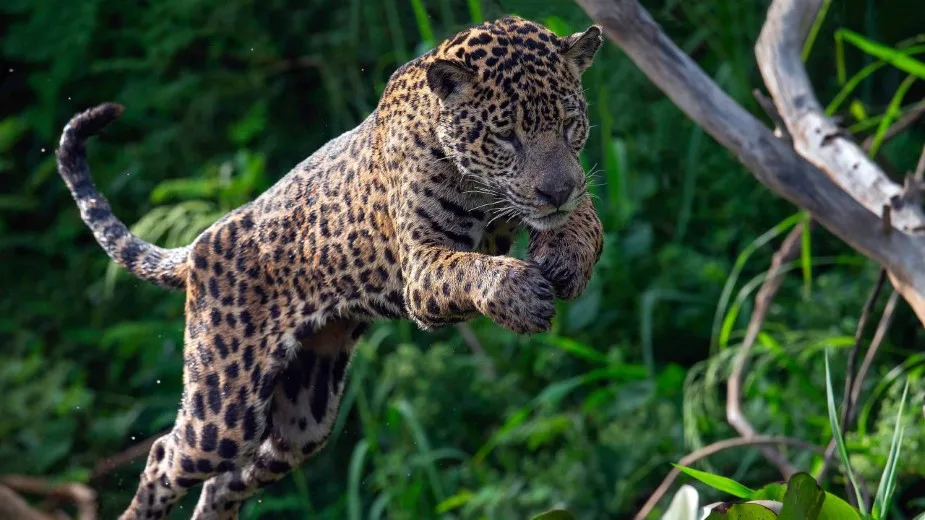
Birds that live in the Peruvian Amazon rainforest
The Peruvian Amazon is home to over 1,300 species of birds. Some of the most fascinating Animals of the Amazon Rainforest include:
- Harpy eagle (Harpia harpyja): The most powerful bird of prey in the Americas.
- Scarlet macaw (Ara macao and Ara chloropterus): A brightly colored parrot that mates for life.
- Blue-and-yellow macaw (Ara ararauna): A beautiful parrot that lives near water.
- Other macaws: Include green species and the rare hyacinth macaw.
- Hoatzin (Opisthocomus hoazin): A prehistoric-looking bird with a long crest.
- Toco toucan (Ramphastos toco): Famous for its large, colorful bill.
- Amazon kingfisher (Chloroceryle amazona): A swift fish hunter.
- Andean cock-of-the-rock (Rupicola peruvianus): Peru’s national bird, with bright red plumage.
- Paradise tanager (Tangara chilensis): A small bird with bright, vivid colors.
- Common potoo (Nyctibius griseus): A nocturnal bird and camouflage expert.
Seeing them in their habitat is one of the greatest attractions of the Animals of the Amazon Rainforest.
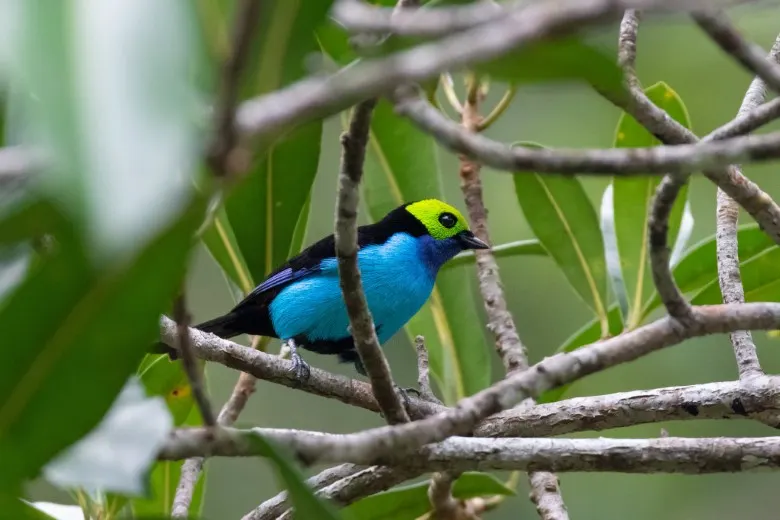
Reptiles that inhabit the Peruvian Amazon rainforest
Some of the most impressive reptiles are:
- Green anaconda (Eunectes murinus): One of the longest snakes in the world.
- Black caiman (Melanosuchus niger): A large aquatic predator.
- Emerald boa (Corallus batesii): With an intense green color, it lives in trees.
- Green iguana (Iguana iguana): A herbivorous reptile that lives near water.
- Yellow-spotted river turtle (Podocnemis unifilis): With distinctive yellow spots on its head.
The presence of these reptiles reveals the great diversity of animals in the Amazon rainforest, where each species plays a vital role in maintaining the ecosystem’s natural balance.
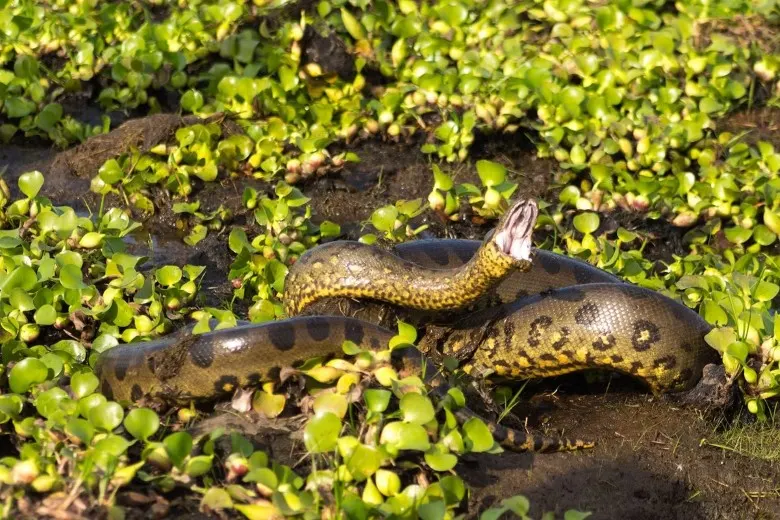
Amphibians that inhabit the Peruvian Amazon rainforest
Among the animals that inhabit the jungle, amphibians bring color and diversity:
- Poison dart frog (Phyllobates terribilis): One of the most toxic animals on the planet.
- Amazon tree frog (Hypsiboas picturatus): Brightly colored and nocturnal.
- Glass frog (Hyalinobatrachium yaku): Has transparent skin.
- Cane toad (Rhinella marina): Highly toxic and adaptable.
- Salamander (Bolitoglossa altamazonica): Discreet and nocturnal habits.
Amphibians are also an essential part of the animals of the Amazon rainforest, adding beauty, color, and mystery to this ecosystem.
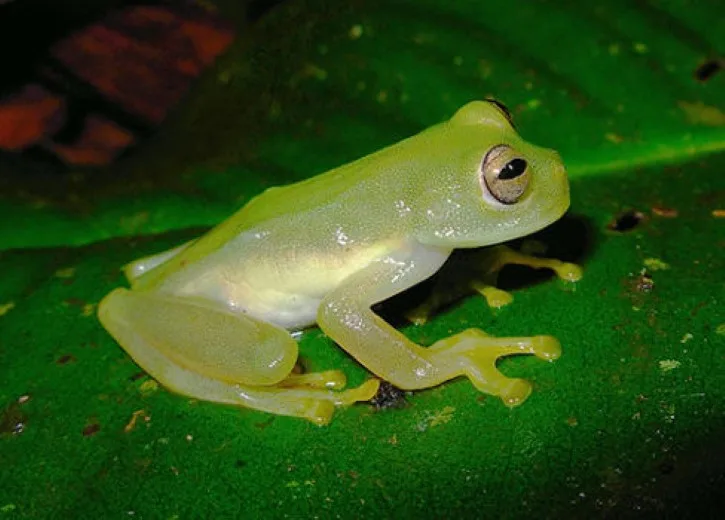
Insects that inhabit the Peruvian Amazon rainforest
Among the most curious ones are:
- Blue morpho butterfly (Morpho peleides): Its shiny blue wings mesmerize those who see it.
- Leaf-cutter ant (Atta sexdens): Vital for forest balance.
- Assassin bug (Reduvius personatus): A predatory insect with potent venom.
- Peanut-head bug (Fulgora laternaria): Has a very peculiar shape.
- Cocoon moth (Urodidae sp.): Strange-looking and nocturnal.
Insects are some of the most surprising animals in the Amazon rainforest, due to their shapes, colors, and ecological roles.
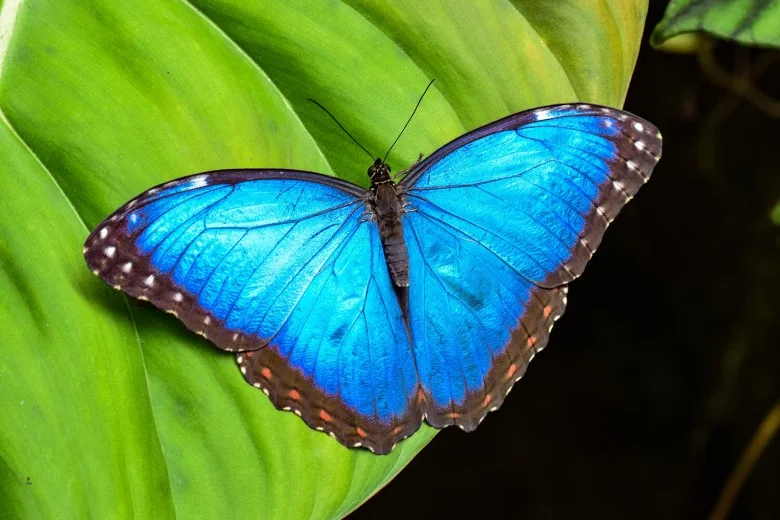
Fish that inhabit the Peruvian Amazon rainforest
Rivers hide giant fish, including:
- Peacock bass (Cichla ocellaris): Famous for its aggressiveness.
- Arapaima (Arapaima gigas): The largest freshwater fish.
- Red-bellied piranha (Pygocentrus nattereri): Carnivorous and feared.
- Electric eel (Electrophorus electricus): Generates powerful electric discharges.
- Red-bellied pacu (Piaractus brachypomus): Similar to a piranha but herbivorous.
Fish also stand out among the animals of the Amazon rainforest, with giant and fascinating species inhabiting Peru’s rivers.
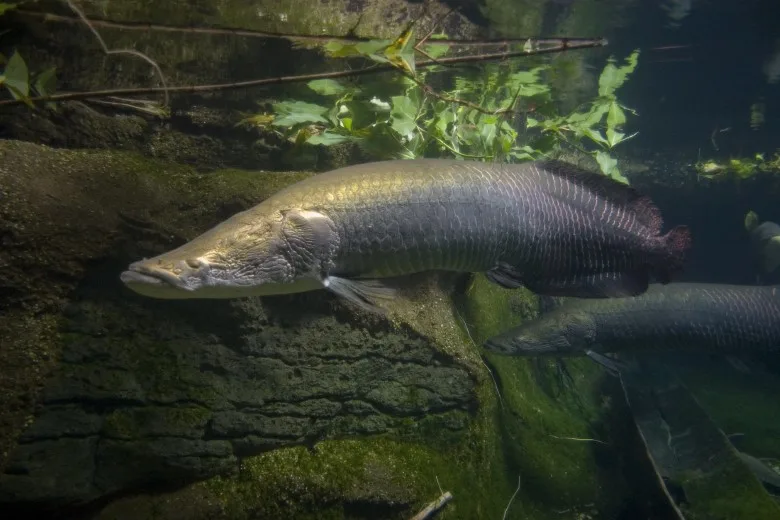
Places to see animals of the Amazon rainforest in Peru
There are several protected natural areas in Peru ideal for nature tourism, such as:
- Manu National Park (Cusco/Madre de Dios): One of the most biodiverse places on the planet. Around 160 mammal species and more than 1,000 birds live here. You can spot cock-of-the-rocks, tapirs, jaguars, monkeys, and harpy eagles.
- Tambopata National Reserve (Madre de Dios): Home to around 648 bird species and 108 mammals. Famous for macaw clay licks, where hundreds of parrots gather at dawn.
- Pacaya-Samiria National Reserve (Loreto): The largest in Peru. With more than 1,000 vertebrate species, including pink dolphins, manatees, piranhas, yellow-headed turtles, and anacondas.
- Allpahuayo-Mishana National Reserve (Loreto): Protects white-sand forests. Hosts 145 mammals (including endemic monkeys), 475 birds (with endemics), and unique species like the Mishana rainfrog.
- Sierra del Divisor National Park (Loreto/Ucayali): Recorded 16 primate species (the highest number in the country). Also home to jaguars, giant anteaters, and various Amazonian birds.
- Alto Purús National Park (Ucayali/Madre de Dios): With more than 400 birds, 132 mammals, 78 amphibians, and 18 reptiles.
- Amarakaeri Communal Reserve (Madre de Dios): Connects Manu and Tambopata. High endemism site with hundreds of newly recorded species. You can spot spectacled bears, river dolphins, and many felines (puma, jaguar).
- Purus Communal Reserve (Ucayali): Pristine Amazonian forests on the border, home to the red-faced uakari monkey and numerous migratory birds.
- Cordillera Azul National Park (Loreto, San Martín, Huánuco, Ucayali): Has about 600 bird species, 91 mammals, and high reptile and amphibian diversity.
- Matsés National Reserve (Loreto): You can spot sloths, armadillos, otters, tapirs, pink dolphins, and rare primates like the bald uakari.
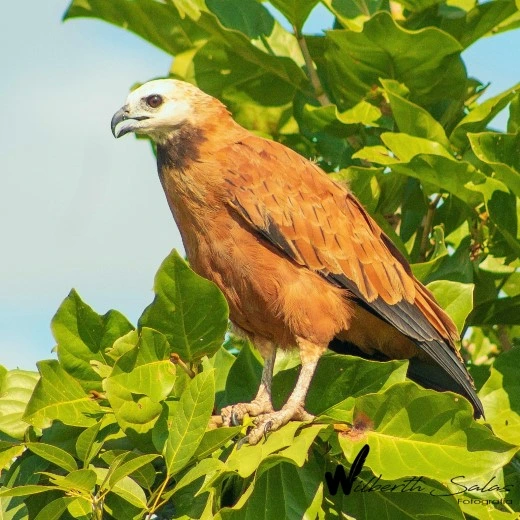
Ideal places to see Peru’s wildlife
In these protected areas, you can take guided excursions with specialized operators. For example, there are tours through the Peruvian Amazon (Manu jungle, Tambopata, Pacaya Samiria, Iquitos) that guarantee safe and eco-friendly wildlife sightings. Each reserve is known for different animals, so check with the agency which one best suits your interests — for instance, a birdwatching expedition in Manu or a boat safari in Pacaya-Samiria.
Exploring the Animals of the Amazon Rainforest in Peru is entering a world full of wildlife: more than 1,300 birds, 160 mammals, plus reptiles, amphibians, and unique insects. From jaguars and pink dolphins to macaws and anacondas, the Peruvian Amazon is ideal for wildlife watching in reserves like Manu, Tambopata, or Pacaya Samiria. Book now with Peru Jungle Trips, experts in wildlife tours and Animals of the Amazon Rainforest. With them, you’ll explore these areas and experience the unique biodiversity of the Amazon rainforest.
Wildlife Watching Tours in the Peruvian Amazon Rainforest
- Iquitos Jungle Tour (4 Days) – Private
- Iquitos Peru Amazon Tours (5 Days) – Private
- Pacaya Samiria National Reserve (5 Days)
- Manu Reserved Zone (5 Days)
- Manu Reserved Zone (6 Days)
- Manu Amazon Rainforest Expeditions (7 Days)
- Collpa Chuncho Macaw Clay Lick + Sandoval Lake & Yacumama Lake (4 Days)

